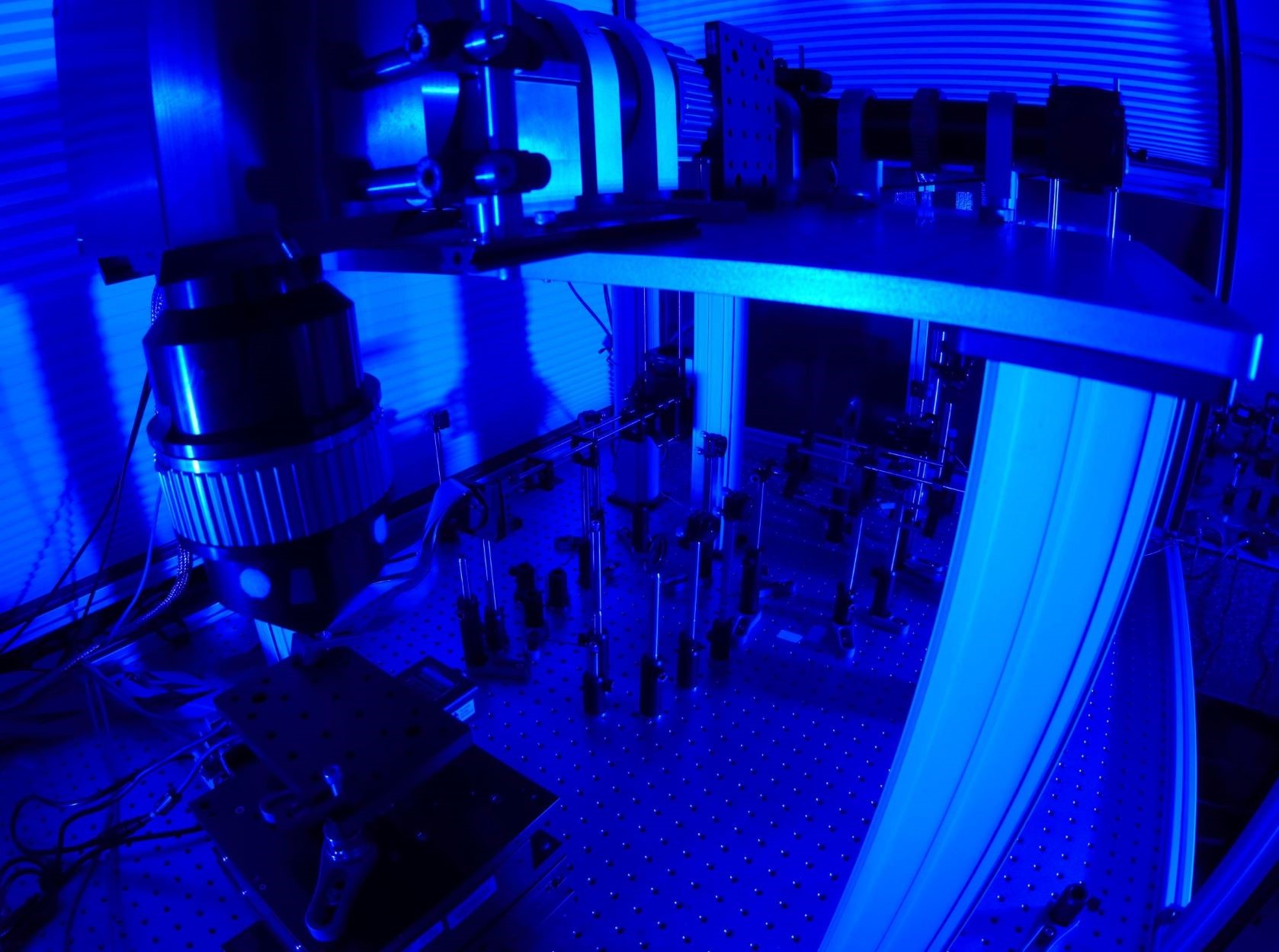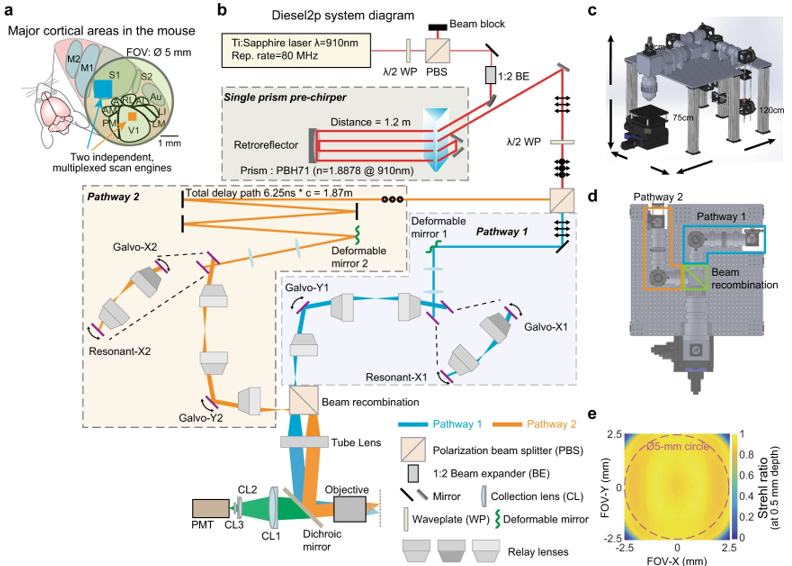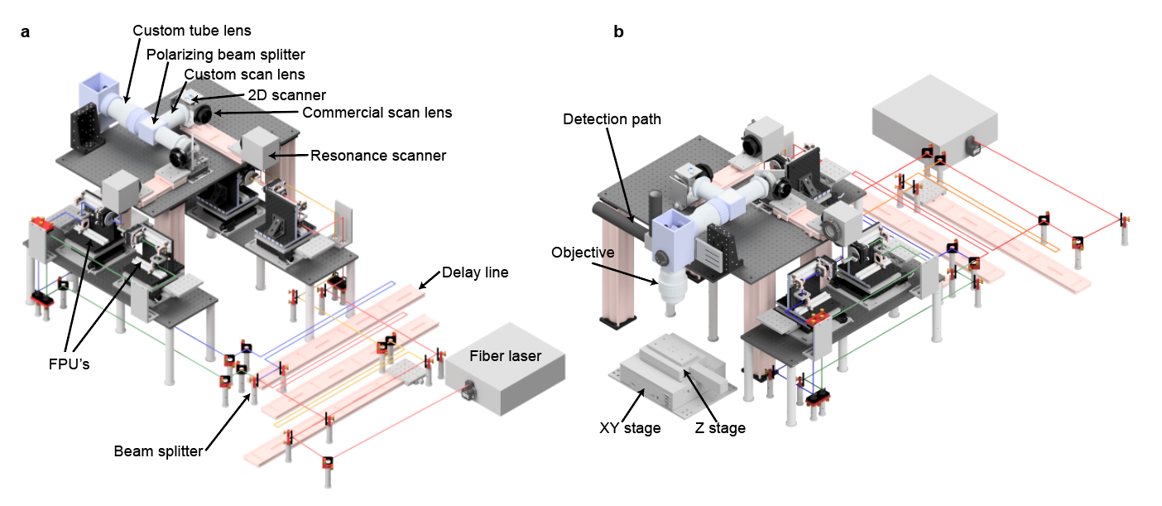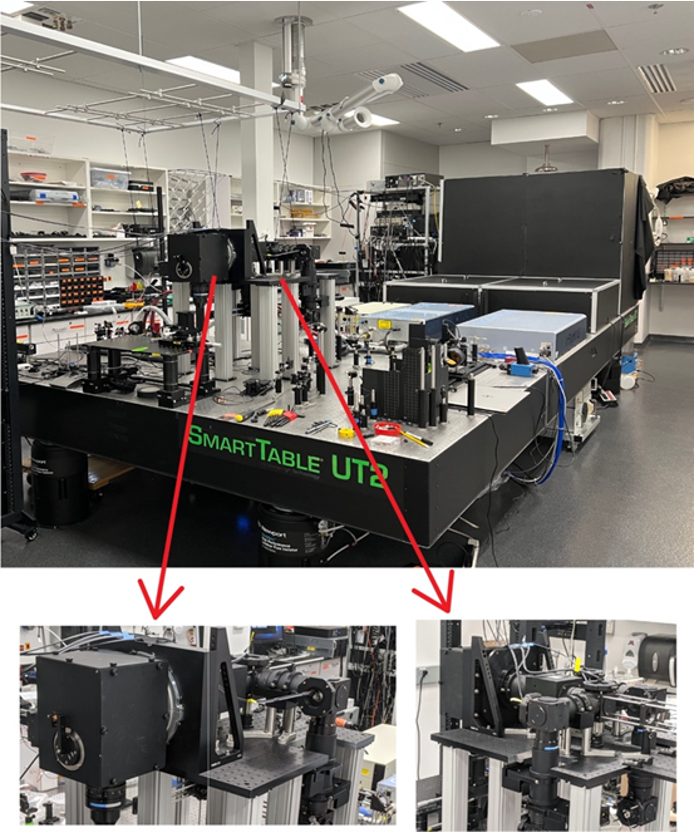Difference between revisions of "Diesel user group"
Ryan McGreal (talk | contribs) (→What is DieselHub?) |
Ryan McGreal (talk | contribs) (→What is DieselHub?) |
||
| Line 29: | Line 29: | ||
==What is DieselHub?== | ==What is DieselHub?== | ||
| − | + | DieselHub will address the lack of easily accessible multiphoton imaging technology in the neuroscience community. | |
| − | + | Not only is multiphoton imaging equipment expensive, it requires expertise to operate that few labs have. Thus, even if imaging rigs are available at a university or institute, it is not as simple as going across the hall to use one as the expertise to use such technology is the second bottleneck, after the expense of equipment. These barriers disproportionately affect new labs as they cannot take the financial risk to purchase an imaging rig without pilot data, in addition to requiring the appropriate mentorship and training on the use of such technology. | |
| − | + | DieselHub will overcome these barriers with two models. First, at UCSB DieselHub will host a centralized hub similar to an observatory model used in astronomy. The instrumentation as well as the technical expertise will be hosted at UCSB, eliminating the barriers of both equipment expense and expertise to selected users. This model is similar to the successful model demonstrated by the OpenScope project at the Allen Institute for Brain Science. | |
| − | |||
| − | DieselHub will use | + | The second model involves traveling instrumentation. DieselHub will set up our imaging rigs at selected user institutes and train personnel on the use of our rigs. By bringing the microscopes to the users, we will make certain experiments more practical by eliminating the need for users to travel to UCSB as well as eliminating the need for users to ship and retrain animals. This model is similar to how microscope companies set up demonstration equipment at user facilities so that researchers can use new state-of-the-art equipment, such as the Nikon BioImaging Centers and Olympus Discovery Centers. |
| + | |||
| + | Both models will be used to benefit the needs of researchers nationwide. DieselHub is not a regional dissemination mechanism, it will benefit labs and institutes nationwide. In addition, emphasis will be placed on selecting users that are outlined in the DieselHub Plan for Enhancing Diverse Perspectives. | ||
==Other Diesel Systems== | ==Other Diesel Systems== | ||
Revision as of 14:40, 5 June 2023
This page is the home for the users of Diesel (Dual Independent Enhanced Scan Engines for Large field-of-view) multiphoton imaging systems
Contents
What is Diesel2p?
Diesel2p (Dual Independent Enhanced Scan Engines for Large field-of-view Two-Photon imaging) is a multiphoton imaging system designed by the Smith lab. With approximately a dozen systems currently in operation or ordered, this custom and fully open-sourced system allows for large field-of view-imaging with two independent scan engines.
Overview of specifications
Diesel2p
-Dual independent scanning engines
-Large field of view: ~5 x 5 mm2, encompassing distances up to 7 mm
-Scan angles up to ±5 degrees at the objective back aperture
-Excitation windows of 910 ± 10 nm and 1050 nm ± 10 nm
What is DieselHub?
DieselHub will address the lack of easily accessible multiphoton imaging technology in the neuroscience community.
Not only is multiphoton imaging equipment expensive, it requires expertise to operate that few labs have. Thus, even if imaging rigs are available at a university or institute, it is not as simple as going across the hall to use one as the expertise to use such technology is the second bottleneck, after the expense of equipment. These barriers disproportionately affect new labs as they cannot take the financial risk to purchase an imaging rig without pilot data, in addition to requiring the appropriate mentorship and training on the use of such technology.
DieselHub will overcome these barriers with two models. First, at UCSB DieselHub will host a centralized hub similar to an observatory model used in astronomy. The instrumentation as well as the technical expertise will be hosted at UCSB, eliminating the barriers of both equipment expense and expertise to selected users. This model is similar to the successful model demonstrated by the OpenScope project at the Allen Institute for Brain Science.
The second model involves traveling instrumentation. DieselHub will set up our imaging rigs at selected user institutes and train personnel on the use of our rigs. By bringing the microscopes to the users, we will make certain experiments more practical by eliminating the need for users to travel to UCSB as well as eliminating the need for users to ship and retrain animals. This model is similar to how microscope companies set up demonstration equipment at user facilities so that researchers can use new state-of-the-art equipment, such as the Nikon BioImaging Centers and Olympus Discovery Centers.
Both models will be used to benefit the needs of researchers nationwide. DieselHub is not a regional dissemination mechanism, it will benefit labs and institutes nationwide. In addition, emphasis will be placed on selecting users that are outlined in the DieselHub Plan for Enhancing Diverse Perspectives.
Other Diesel Systems
In addition to Diesel2p, a 4-channel version is in operation at the Chen lab and a three-photon version is operated by the Kara lab.
Quadroscope
-Dual independent scanning engines
-Large field of view: ~5 x 5 mm2
-4-channel microscope (2 per scan engine)
-Diffraction-limited performance optimized across an excitation wavelength range of 920–1040 nm
Diesel3p
-Dual independent scanning engines
-Large field of view: ~5 x 5 mm2
-Allow simultaneous 2p + 3p imaging, achromatic at 920nm and 1300 nm
-8-mm long working distance, 360 degree rotatable, 0.54NA, air objective
Publications
Diesel2p mesoscope with dual independent scan engines for flexible capture of dynamics in distributed neural circuitry
https://doi.org/10.1038/s41467-021-26736-4
Yu, Che-Hang ; Stirman, Jeffrey N. ; Yu, Yiyi ; Hira, Riichiro ; Smith, Spencer L. ( November 2021 , Nature Communications)
Flexible simultaneous mesoscale two-photon imaging of neural activity at high speeds
https://doi.org/10.1038/s41467-021-26737-3
Clough, Mitchell ; Chen, Ichun Anderson ; Park , Seong-Wook ; Ahrens , Allison M. ; Stirman, Jeffrey N.; Smith, Spencer L. ; Chen, Jerry L. ( November 2021 , Nature Communications)
Lens prescriptions
Full Diesel2p lens prescription available here



